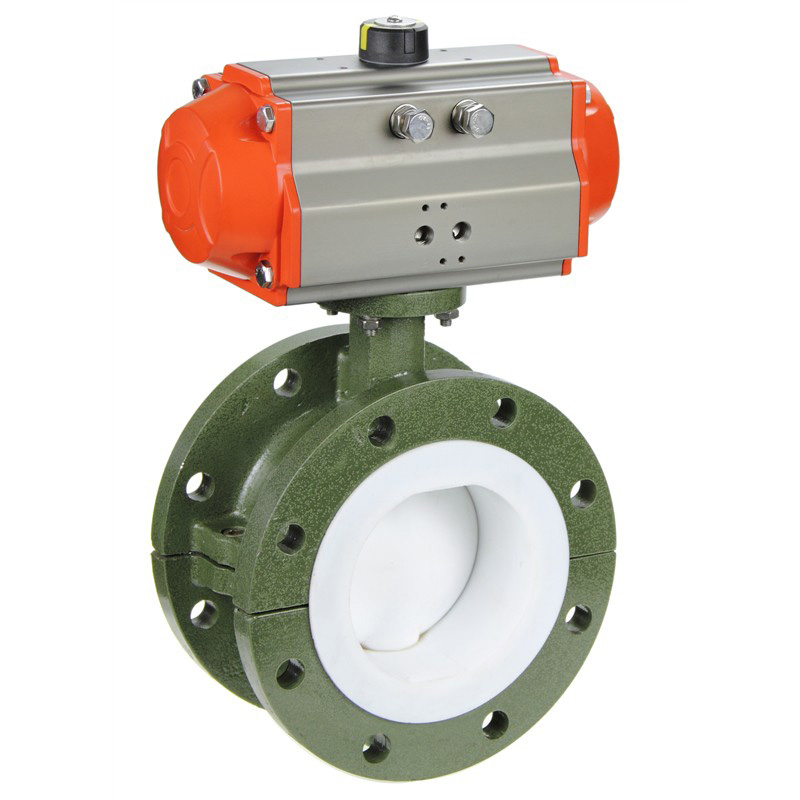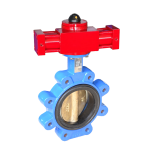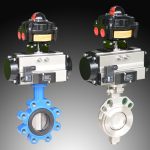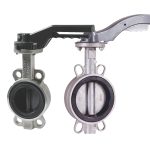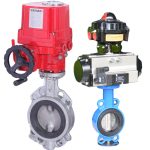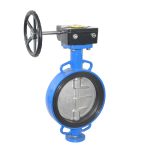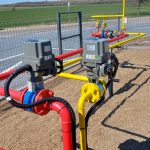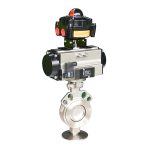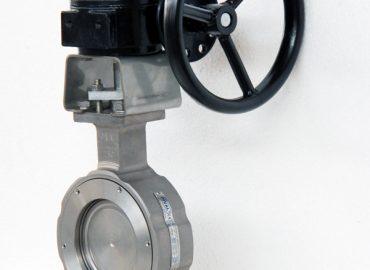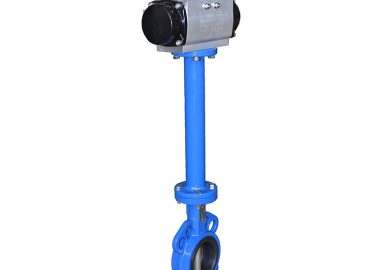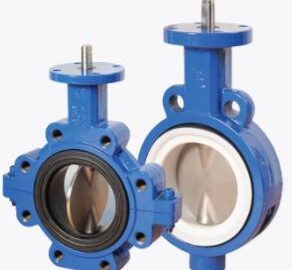Air actuated butterfly valves are an integral part of many industrial applications, used to regulate the flow of fluid or gas through a pipe. Selecting the right valve is crucial to ensure optimal flow control and efficient operation. There are several considerations to keep in mind when selecting an air actuated butterfly valve, which include operational requirements, valve size and shape, actuator type, material of construction, industry-specific requirements, among others. In this blog post, we will discuss each of these considerations in detail, provide an explanation of how to select the right air actuated butterfly valve for your specific application, and offer insights on which valve model best suits each industrial application.
Introduction
When selecting an pneumatic butterfly valve, there are several considerations that need to be taken into account. Firstly, you must consider the operational requirements of the valve, such as pressure requirements and maximum temperature. Secondly, the size and shape of the valve should be considered, ensuring it is appropriate for your application. Thirdly, the type of actuator should be taken into account – pneumatic, electric or hydraulic – based on the power needed and your budget. Fourthly, the material used in construction can also have an impact on performance and utility, with metal or plastic valves suitable for different applications. Finally, certain industries may have their own specific requirements when selecting an air actuated butterfly valve – such as food and beverage or oil and gas – which should also be taken into consideration when making your selection.
Explanation of air actuated butterfly valve
Wafer butterfly valve is a type of valve in which a disc or plate, known as the ‘butterfly’, rotates inside the pipe to regulate the flow of a medium. It’s powered by an actuator such as pneumatic, hydraulic or electric, which is used to control the opening and closing of the butterfly. Air actuated butterfly valves are often preferred due to their lightweight design and low maintenance requirements, making them ideal for industrial applications. In addition, these valves can be operated with precise accuracy and have a low pressure drop across them. Furthermore, these valves are available in various sizes and materials suitable for different types of applications.
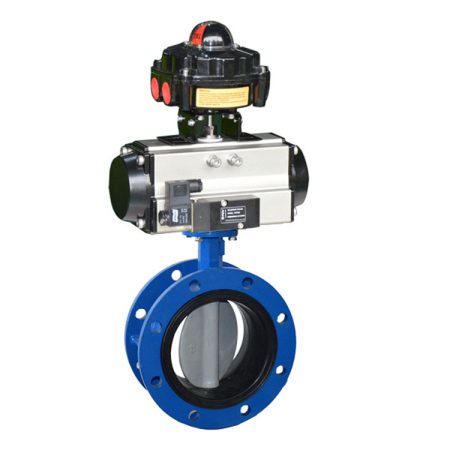
Importance of selecting the right valve for industrial settings
The importance of selecting the right valve for an industrial setting cannot be overstated. This is because industrial valves play a key role in controlling and monitoring the flow of liquids and gases within a system, and their functionality can directly affect a system’s performance, efficiency, productivity and safety. Furthermore, having the appropriate valve for each application ensures that it meets all necessary regulatory requirements with respect to its control capabilities, pressure ratings and other necessary parameters. As such, it is essential to invest in quality valves that have been designed and manufactured with precision to ensure proper performance, longevity and reliability.
Considerations for selecting an air actuated butterfly valve
When selecting an lug butterfly valve, there are a few key considerations to keep in mind. Firstly, it is important to consider the type of material that will be used in the valve construction as this can affect how long the valve will last and operate efficiently. In addition, it is important to ensure that the size of the butterfly disk matches both the bore of the pipe and flow requirements of your application. Furthermore, you should also consider factors such as actuator type and power rating, pressure ratings and control capabilities before making your final selection. Finally, it is essential to check for any necessary certifications or approvals for a particular valve before making your purchase.
Operational requirements
Flow control, pressure requirements, temperature and fluid/gas type are all important considerations for selecting the right valve for an industrial setting. Flow control dictates how much of the desired fluid or gas can pass through the valve on a given set of parameters. Pressure requirements need to be considered, as valves must be able to withstand certain pressures in order to operate smoothly and safely. Temperature is also an important factor because it affects the viscosity of a liquid or gas, which in turn can affect its behavior within a system. Finally, considering the type of fluid/gas that will be used with each individual valve helps narrow down your options and ensures that you find the right valve for your application.
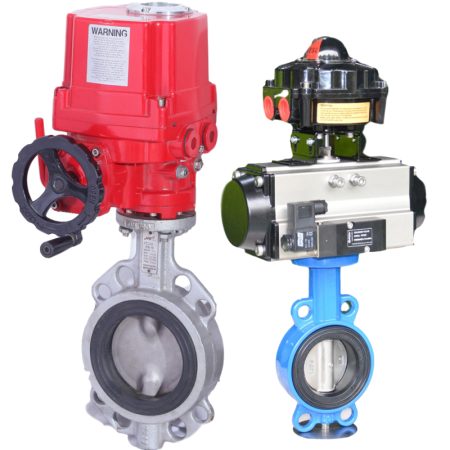
Valve size and shape
The size and shape of a valve play an important role in its effectiveness. Different types of valves come in various shapes and sizes, allowing them to be used in different applications. For example, some valves have a rounded shape that can easily fit into tight places, while others have a more rectangular shape that offers better flow characteristics. Additionally, certain valves come with unique features such as removable covers or supports that can make installation easier and provide extra protection during operation. By considering all of these factors when selecting the right type of valve for your application, you can guarantee optimal performance and reliability.
Standard sizes for industrial valves are typically expressed in terms of nominal size, inner diameter or outer diameter. To determine the right size for your application, it is important to know the type of valve you are using and its corresponding range of sizes. For example, solenoid valves can be found in sizes ranging from ¼” to 3″ while ball valves come in sizes ranging from ½” up to 6″. Additionally, there are often options for custom sizes depending on your exact requirements and preferences. Knowing the right size is important as it helps ensure that all components fit together correctly and function as expected.
Actuator type
Actuators are used to automatically control the operation of valves in industrial environments. They come in many different types and with a variety of features, allowing them to be tailored to their application. Most actuators are electric, meaning they are powered by an electrical current and use motors or solenoids to drive the valve’s motion. There are also pneumatically operated actuators that use pressurized air to move the valve, as well as manually operated models that require manual operation by a user. Knowing how each type of actuator works is important for selecting the right one for your application, as it will ensure optimal performance and reliability.
Actuators come in a variety of types, each designed to provide a different kind of operation. The most common types are pneumatic, electric, and hydraulic actuators. Pneumatic actuators use pressurized air to move the valve, electric actuators use an electric current and motors or solenoids to drive the valve’s motion and hydraulic actuators use fluid pressure supplied by a pump or other system to move the valve. Additionally, there are also manual actuators that require manual operation by a user. Understanding the differences between these various types is critical for selecting the appropriate actuator for your application in order to ensure optimal performance and reliability.
Each type of actuator has its own set of benefits and drawbacks. Pneumatic actuators are lightweight and easy to install and maintain, but require a separate air supply system in order to operate. Electric actuators offer precise control and can be operated remotely, but they require a significant amount of energy input to operate and can be vulnerable to power outages or surges. Hydraulic actuators are powerful, reliable, and have a high torque capacity; however, they need dedicated hydraulic systems to operate. Finally, manual actuators are inexpensive but require operator involvement for operation. Knowing the benefits and drawbacks of each type of actuator is important for selecting the best one for your application.

Material of construction
Actuators are typically constructed from several different materials depending on the type. Pneumatic and electric actuators are usually made out of aluminum or steel, while hydraulic actuators can be constructed out of various metals, including brass, stainless steel, and cast iron. Different materials may offer different levels of corrosion resistance, strength, and wear resistance, making it important to select the best material to suit the needs of your application. Additionally, manual actuators often incorporate rubber seals to protect against fluid contamination and mechanical wear.
Valves are constructed from a variety of materials, each with its own unique benefits and drawbacks. Metals like stainless steel, brass, and cast iron are popular for their durability and resistance to high temperatures and pressures. Plastics like PVC are cost-effective and can provide chemical and corrosion resistance in certain applications. Carbon is also suited to applications where strength is essential, such as regulating extremely large flows or operating at high pressures. The most suitable material must be chosen carefully considering the application’s requirements.
In industrial settings, stainless steel is the most commonly used material for valves due to its corrosion-resistance properties, low cost, and high tensile strength. Brass and cast iron are also popular options, as they are resistant to extreme temperatures and pressures, while still maintaining high strength. Plastics like PVC can offer chemical resistance but may be subject to cracking or deformation over time. Carbon has excellent strength, but it is expensive and difficult to work with. Each material offers unique benefits and drawbacks that must be carefully considered when choosing a valve construction material.
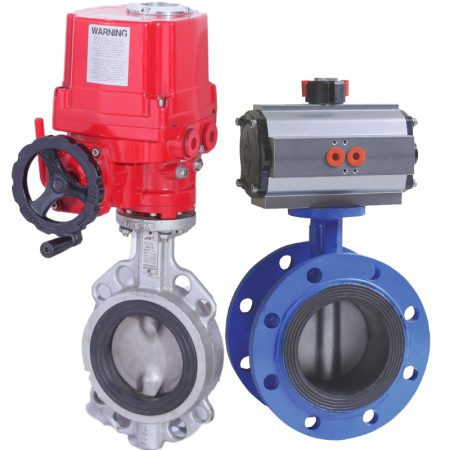
Industry-specific requirements
Industrial valves are used in a variety of applications, and each one requires specific needs to be met when choosing the right material. In chemical and petrochemical operations, corrosion-resistant materials like stainless steel and titanium are essential, while extreme temperatures might require materials such as Hastelloy or Inconel. Hydroelectric operations require valves that can withstand high pressures and temperatures for extended periods. Specialty coatings may also be applied to some metals to increase their durability in specific conditions. The most suitable material must be chosen carefully considering the application’s requirements.
The food and beverage, chemical and oil and gas industries all require different materials for their valves due to the unique conditions they operate in. Food and beverage operations require materials that are non-toxic and safe for contact with consumable products. Corrosion resistance is another top priority as pipes are often exposed to acidic or sugary liquids. For chemical operations, titanium or stainless steel may be needed due to their excellent corrosion resistance properties. Oil and gas operations require material that can withstand extreme temperatures and pressures, making materials like high-alloy steels a popular option. Each application must consider its unique requirements when selecting a valve construction material.
Conclusion
When choosing an air actuated butterfly valve, it’s important to consider a variety of factors. These include the material chosen for the valve’s construction, whether the flow needs to be regulated or on/off controlled, and the operating temperature and pressure requirements. Be sure to research the application needs carefully, in order to select a valve that will provide reliable performance under demanding conditions. Additionally, weigh up any additional features you require from your valve such as ease of installation, low maintenance costs, and compatibility with other components. With adequate research and consideration taken into account when selecting an air actuated butterfly valve, one can ensure safe and effective operation in their system.
Recap of considerations when selecting an air actuated butterfly valve
When selecting an air actuated butterfly valve, it is important to consider the material used for construction, the flow control requirements, the operating temperature and pressure, as well as other features such as ease of installation and maintenance costs. Additionally, compatibility with other system components should be taken into account. Doing adequate research and taking these considerations into account when selecting an air actuated butterfly valve will ensure a safe and effective operation.
Importance of selecting the right valve for the specific industrial application
It is important to select the right air actuated butterfly valve for a specific industrial application in order to ensure proper operation and reliability. The material used for construction should be appropriate for the application, and the flow control requirements and operating temperature and pressure of the system must all be taken into account. Additionally, features such as ease of installation, low maintenance costs, and compatibility with other components must be evaluated in order to make the best choice. With careful consideration taken into selecting an air actuated butterfly valve, one can confidently expect reliable performance under demanding conditions.


